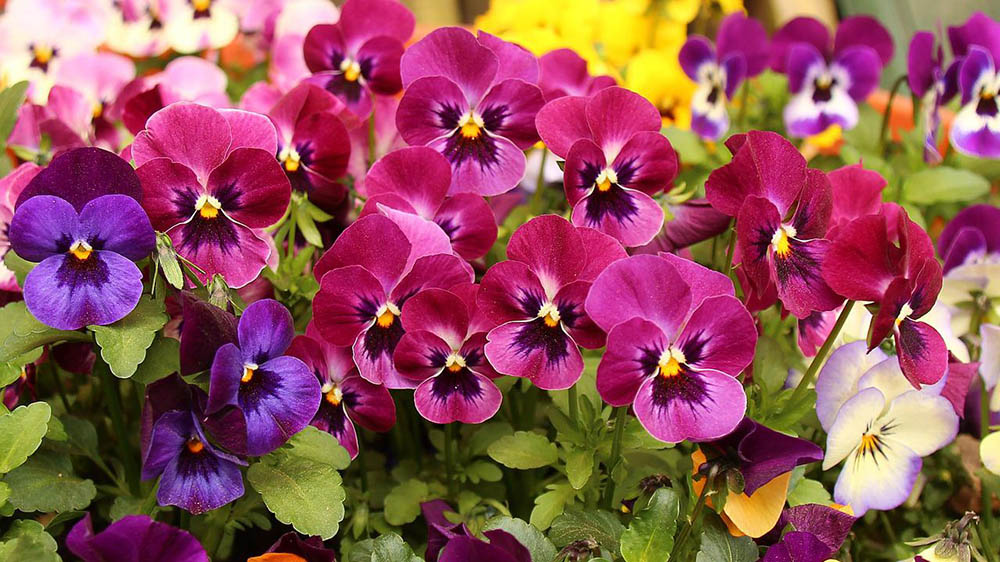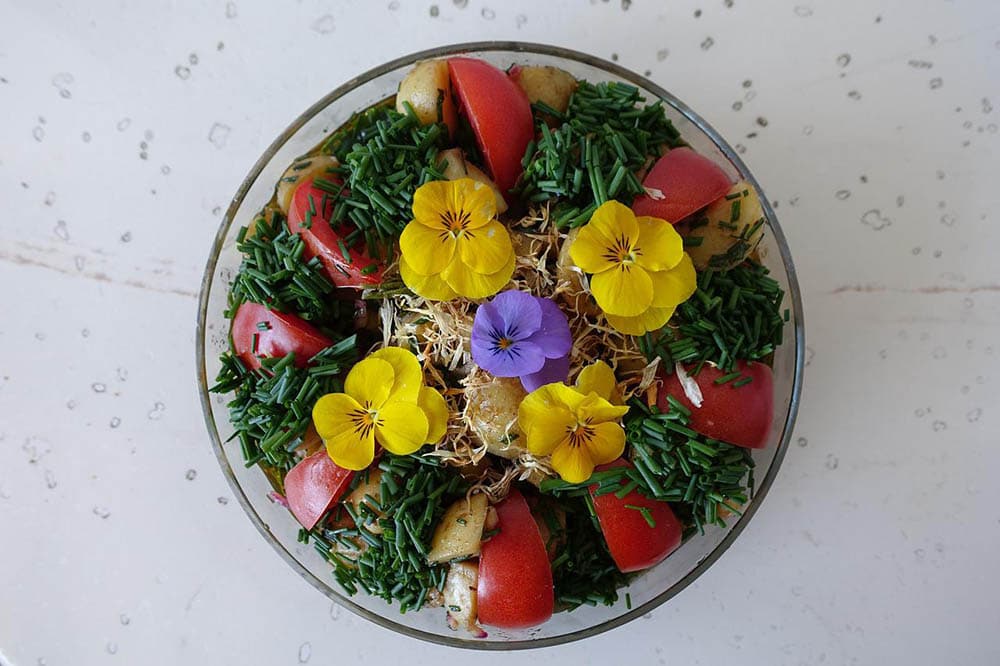How & When to Plant Pansies: Tips, Pests, & Diseases
-
Shea Cummings
- Last updated:

In a contest for simple beauty, pansies are often high on the list for most people. These colorful flowers are available in many different color variations and is a hardy plant that is relatively easy to care for.
Unlike many other flowers, pansies won’t do well if you live in a hot climate. They are a cool-weather plant that prefers cooler soil temperatures and can even survive frost. Even if the cold weather causes the flower to fade, the plant itself will usually bloom again quickly.
The climate you’re in determines when you plant them, but typically you’ll want to plant a pansy in the early spring or early fall. Also, planting established plants will give you beautiful blooming flowers sooner.

Planting Pansies
When planting pansies, there are several things to keep in mind regarding where and when to plant them. Assuming you’re starting with an established plant that you purchased from your local nursery or greenhouse, you can plant them as soon as the ground is workable following the winter.
As long as the threat of deep negative temperatures is gone, your established pansy can withstand some frosty nights. However, if you’re starting from a seed, you’ll want to start the plant inside around 8–10 weeks before the last spring frost.
Pansies thrive as container flowers. So, containers are a great option if you’re starting yours from seed. With a container, you can control sun and temperature better—put it out in the morning sun and move it to shade when the afternoon sun is beating down.
If you’re planting in the garden, here are a few things to keep in mind for a successful growing season:
- Choose a suitable area that receives morning sun and afternoon shade.
- Transplant an established plant into fertilized soil.
- Ensure that plants are around a foot apart.

Caring for Pansies
Pansies are pretty hardy and don’t require any special care. As long as they aren’t subjected to full sun, and the soil doesn’t get warmer than 65°F (18°C) very often, you won’t have many issues.
They do take a decent amount of watering. Ensure that the soil is always damp but not soggy. Inadequate watering is a common reason that pansies don’t thrive. Also, an all-purpose fertilizer is sufficient; avoid nitrogen-heavy fertilizers if possible.
When it’s blooming season, make sure you remove dead and dying flowers to encourage new blooms to pop.
Pests and Diseases
Like many other beautiful flowers, pansies are susceptible to various pests and diseases. Usually, these are treatable with available pesticides and herbicides. Just remember that if you plan on eating the flowers, you don’t want to treat them with any chemicals.
Here are a few of the common pests and diseases to watch out for:
- Crown and root rot
- Gray mold
- Downy and powdery mildew
- Mosaic virus
- Rust
- Aphids, snails, or slugs

Using Pansies for Food and Decoration
Pansies have been used to compliment dishes for many years. They are 100% edible plants—pedals, leaves, stamen, everything. The only thing to be careful with if you’re going to eat them is ensuring that they haven’t been treated with any chemicals. For this reason, it’s best if you only eat pansies that you’ve grown and know haven’t been sprayed.
Here are some common uses for pansies in food:
- Salads: Pansies have a fresh, lettuce-like flavor. Some people say they taste very “green”. As a result, they make a great addition to a fresh garden salad because of the way the flavors marry. And they add a beautiful burst of color to the salad.
- Dessert: Sometimes, pansies are pushed into the icing of a cake to add a pop of color to the cake. But many chefs using pansies in their desserts will candy the flower. The only ingredients needed to candy a pansy are egg whites, water, and confectioner’s sugar. Not only will this preserve the flower’s beauty, but it gives it a sweeter flavor.
- Decoration: Another use for pansies is for decorating things like cocktails. They are either used as a garnish or sometimes they are frozen into ice cubes for a nice visual inside the drink.

Conclusion
Pansies are a beautiful addition to almost any garden. As long as you can provide for their sensitivity to the heat and direct sun, you won’t have any problems growing them. A huge perk of pansies is their edible nature as well—they look great, and you can eat them; it doesn’t get much better than that.
Featured Image Credit: klausPeter, Pixabay
Contents
